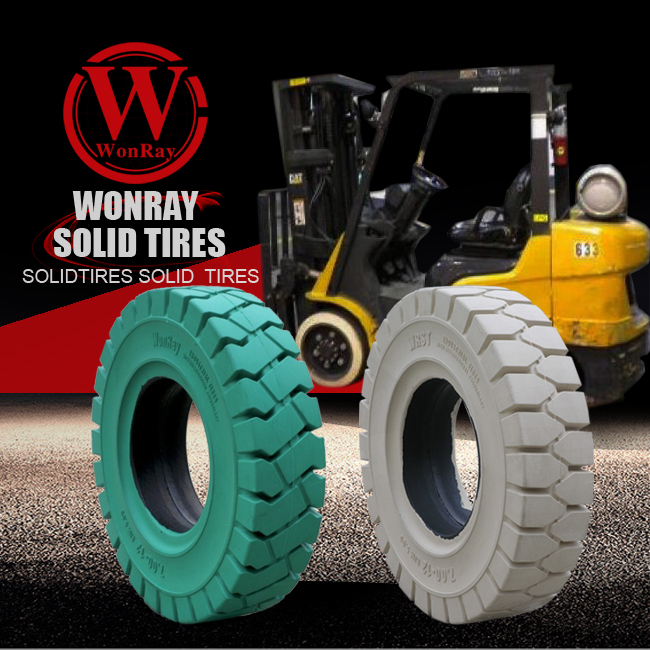In the world of light industrial, agricultural, and commercial equipment, a tire isn’t just a piece of rubber; it’s a foundational component that determines performance, safety, and efficiency. Among the vast array of tire sizes, the 4.00-8 tire stands out as a workhorse, a versatile choice for everything from wheelbarrows and hand trucks to log splitters and garden tractors.
Choosing the right 4.00-8 tire is a strategic decision that directly impacts your equipment’s longevity and your operational costs. A well-selected tire minimizes downtime, enhances load-bearing capacity, and improves overall safety, making it a critical consideration for any B2B buyer.
The Key Advantages of the 4.00-8 Tire
The popularity of the 4.00-8 tire stems from its unique combination of size, versatility, and performance.
- Versatility: This tire is a common fit for a wide range of light-duty equipment, simplifying inventory and making it a go-to choice for businesses with diverse fleets. Its size is suitable for both high-speed applications on smooth surfaces and low-speed, high-traction tasks on rugged terrain.
- Optimal Load-Bearing: Despite its compact size, the 4.00-8 tire is engineered to handle significant weight. Its robust construction ensures it can support heavy loads without deforming, providing stability and confidence on the job site.
- Excellent Traction: Available in various tread patterns, these tires can be optimized for specific environments. From ribbed treads for easy steering on grass to knobby treads for superior grip on mud or dirt, there’s a 4.00-8 for every application.
- Cost-Effectiveness: The widespread use of this tire size makes it readily available and affordable. The combination of its long service life and competitive pricing results in a lower total cost of ownership for your equipment.
Types and Applications of 4.00-8 Tires
Understanding the different types of 4.00-8 tires is crucial for making the best choice for your specific needs.
1. Pneumatic (Air-Filled) Tires
- Features: Provides cushioning and a smoother ride. Ideal for transporting fragile goods or for use on uneven surfaces where shock absorption is needed.
- Applications: Hand trucks, sack barrows, and small trailers.
2. Solid (Puncture-Proof) Tires
- Features: Made from solid rubber, eliminating the risk of flats. Zero maintenance required.
- Applications: Wheelbarrows, carts, and equipment used in construction or demolition sites where sharp debris is common.
3. Semi-Pneumatic (Flat-Free) Tires
- Features: A hybrid option that combines the air-like cushioning of a pneumatic tire with the flat-free security of a solid tire.
- Applications: Lawn mowers, garden carts, and utility equipment.
Making the Right Choice: Key Factors to Consider
Before you make a purchase, consider these essential factors to ensure you get the perfect tire for your application.
- Ply Rating and Load Capacity: The ply rating indicates the tire’s strength. A higher ply rating means the tire can handle more weight. Always choose a tire with a load capacity that exceeds the maximum weight your equipment will carry.
- Tread Pattern: Select a tread pattern that matches your work environment. A smooth or ribbed tread is best for hard surfaces, while a knobby or lug tread is necessary for soft ground, mud, or snow.
- Tire Material: The material can affect durability and grip. Natural rubber provides good traction, while synthetic compounds can offer superior resistance to abrasions and chemicals.
- Axle and Rim Compatibility: Ensure the tire’s hub size and overall dimensions are compatible with your equipment’s axle and rim to guarantee a perfect and safe fit.
Conclusion
The 4.00-8 tire is more than a standard part; it’s a critical investment in the efficiency and safety of your operations. By understanding its key advantages and the different types available, you can select a tire that not only fits your equipment but also enhances its performance and minimizes costly downtime. Making an informed choice now will ensure your work continues to move forward without interruption.
FAQ
Q1: What is the main difference between a pneumatic and a solid 4.00-8 tire? A: A pneumatic tire is filled with air and provides a cushioned ride, while a solid tire is made of dense rubber, is puncture-proof, and requires no air maintenance.
Q2: Can I use a 4.00-8 tire on any type of wheelbarrow? A: Most wheelbarrows are designed for this size. However, you must check the axle diameter and rim compatibility to ensure a proper and safe fit.
Q3: How do I know the load capacity of a 4.00-8 tire? A: The load capacity is indicated by the tire’s ply rating and is typically listed on the sidewall of the tire. Always refer to this rating to match the tire to your equipment’s maximum weight.
Q4: Are all 4.00-8 tires the same size? A: While they all share the same nominal dimensions (4-inch width, 8-inch rim diameter), minor variations in tread depth and overall diameter can exist between brands. Always check the manufacturer’s specifications for an exact fit.
Post time: 02-09-2025

